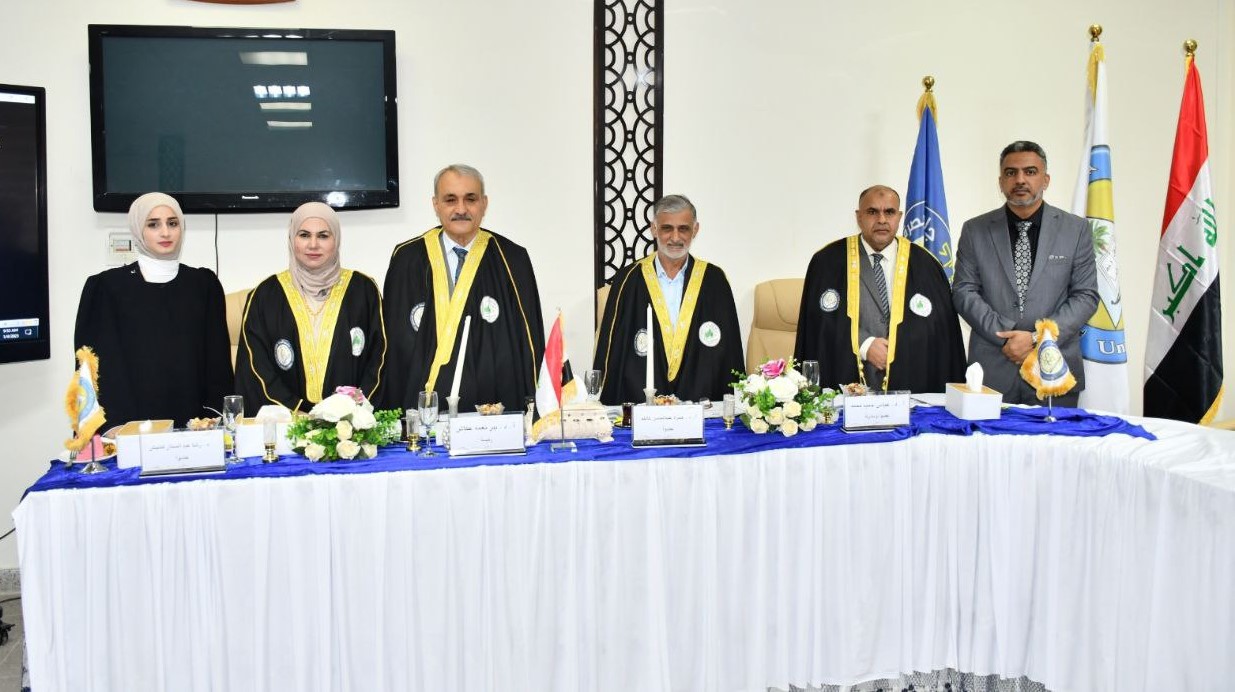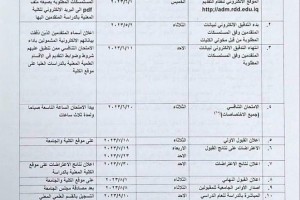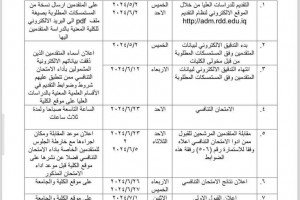

The Department of Geology, College of Science, discussed a master's thesis entitled (Biostratigraphy and Facies Analysis of the Mushrif Formation in the Tuba Oil Field, southern Iraq). The researcher's thesis, Sari Kazem Abbas, aims to diagnose the fossils in an accurate and detailed manner for the Mushrif Formation in the Tuba oil field, and to determine the petrographic characteristics and facies of the rock units, in addition to diagnosing and identifying all the transformational processes and their environments that affected the formation.
The study included an introduction about the formation of the Mushrif, its geological and stratigraphic nature, field and laboratory work, for two wells (TU-5, TU12), illustrating the wells of the study area on a topographic map, and drawing a geological stratigraphic column for the fossils found in the study fields.
The results reached a diagnosis and an indication of the fossils found in the fine rock slides of the study area, which include the two types of floating and benthic foraminifera, molluscs and other types of organisms, in addition to identifying four types of the main microfacies, which are the waky limestone facies, the compacted limestone facies, the granular limestone facies and the facies of granular limestone. Clay limestone and its secondary facies. It is clear that the most prevalent facies are the waki limestone facies, and the compacted limestone facies. It has been shown that the best production sites are located in the Tuba 12 field.










